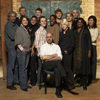Three for the Price of One
How new techniques combine the best of print, broadcast and online journalism
A piano plays softly as images of the wrecked plane fade in and out. A man’s voice solemnly describes an encounter with a young boy who asks why his daddy’s plane is in so many pieces. The photos fade into a picture of a serene sky with a distant lighthouse—the piano keeps playing.
Click
An animated map shows the precise path of the plane before it crashes into the ocean.
Click
Another map. This time with rescue vessels scattered across the waters. See images of the different ships at work while listening to a concise audio explanation of each step.
Click
Scroll through the names of the 229 people who perished in the crash. The soft music is back.
This story is multimedia journalism at its finest. Well, one of its finest. In September, CBC.ca’s The Nature of Things: The Investigation of Swissair 111 received one of three $1,000 special distinction awards at the 2004 Batten Awards for Innovations in Journalism. The judges praised the piece for its “Powerful storytelling, splendid navigation, [and] innovative touches throughout.”
The Batten Awards are given by the University of Maryland’s J-Lab: The Institute for Interactive Journalism. The center, launched in December 2002, is designed to help news organizations use new information ideas and computer technologies to develop different ways to engage people in the news.
These and other awards, like the Online Journalism Awards honouring excellence in digital storytelling, focus on a relatively new form of journalism that is joining the ranks of print and broadcast – multimedia journalism.
What is multimedia journalism?
This innovative form of online news is perfect for the journalist of many talents. It combines the written skills of a print journalist, the eye for captivating images of a photojournalist, the trained ear of a broadcast journalist, and even the computer skills of a web producer. “Multimedia journalistic pieces can be multi-dimensional – offering text, stills, audio, and video – that allows the news consumer to choose which parts of the information package they want to experience, and how,” explains Mary McGuire, a journalism professor at Carleton University. “They allow for a whole new way to consume news.”
But it’s more than adding a video clip or images to an online news story. True multimedia journalism creates an experience. As Brian Storm, the former Director of Multimedia at MSNBC.com, wrote in an article for The Digital Journalist, multimedia is a format wherein “the ‘couch potato’ experience of passively watching TV will collide with the interactive forward tug of computer usage.”
It’s a piece that offers the in-depth news content of a magazine feature, the vivid displays of a TV documentary, and the clear explanations of expert sources. These elements culminate into a seamless, packaged news presentation without the text-heaviness of magazine articles, the restrictions of documentaries, and the tedious demonstrations of experts. Moving animations show people how complicated processes work; digestible bits of text convey important facts; and slides, video and audio produce the emotional value. All the while the user is in control of the experience, able to click on the topics that interest him and skip over sections that don’t.
Multimedia at MSNBC.com
The top $10,000 2003 Batten Award went to MSNBC.com’s series of news features, Big Picture. The three pieces focused on the 2002 midterm U.S. elections, the war in Iraq, and the Academy Awards. The election feature offers users a simulated experience as the leader of either candidate’s election campaign, demonstrating yet another benefit of such multimedia presentations – interactivity.
Ashley Wells, senior interactive producer for MSNBC, explains the benefits of multimedia journalism in an email: “‘Multimedia’ and ‘interactive’ presentations ought to include viewer participation beyond the ability to simply skip ahead or choose your chapter. I focus on producing pieces that challenge viewers to think and react through interactive exercises, such as editing together a campaign commercial or setting a future 100-meter dash record, then racing to beat it.
“That’s a technological advantage online has over print, radio, or television. And it opens up all sorts of opportunities to really get people engaged in the content and discussing it with others.”
At MSNBC, Wells generally leads a team of three people – he is the writer/producer, there’s a designer, and the trio is completed by a Flash developer (Macromedia’s Flash is the program of choice for many news organizations to create complicated multimedia presentations that can blend text, pictures, audio/video, interactive buttons, and animations). For large projects, the team is joined by an anchor, section editor, and studio crew. They will work for about a month doing research, gathering audio/video, designing, and developing the presentation. Smaller projects may only take a week. Every member of Wells’s team has some journalistic background, but that’s not always the case.
Working on your own
Jane Stevens is a freelance multimedia journalist who has done work for organizations like the Discovery Channel and MSNBC.com. She often collects the information and puts together presentations herself, but doesn’t think that’s the norm.
“Unfortunately, at most news organizations, journalists are not involved in producing multimedia stories. That is left to web producers figuring out how to ‘enhance’ a print or TV story for the web.” Even made-for-the-web projects don’t always fully involve journalists. Sometimes Stevens sends in her photos, video, and text to a web producer who puts the elements onto a page he’s constructed. Other times she works with a team of four or five people in which she is the only journalist.
Then there’s Angela Misri – an exception to Stevens’s rule. Misri is the web producer for the CBC’s WebOne, a site devoted entirely to multimedia pieces. “It’s radio you can watch and a website worth listening to,” boasts the headline on WebOne’s homepage. By combining snippets of CBC’s compelling radio broadcasts with original online content and design, the site presents both captivating and informative multimedia pieces. Though formed in 2001 by four people, in May 2004 WebOne was reduced to just Misri. She now designs, creates, writes, and produces most of these compelling pieces alone.
So, if you land a job like Misri’s or work as a freelancer like Stevens, you might have the opportunity to write and produce multimedia pieces on your own. How do you create such seamless presentations? All you need are some technical skills, journalistic ability, a whole lot of creativity—and some cash.
Basic Tools
1. Digital Video Camera/ $4,000 (approx.)
2. Adobe Photoshop/ $139.99
3. Macromedia Flash (graphic animation program)/ US$499
4. iMovie (Video Editing Program)/ Software provided on Apple Macintosh computers
Skills
Some journalism schools choose not to teach students the technical skills, like how to use Macromedia Flash. “Many of the online editors I talk to say they don’t need students with Flash skills,” says Tim Curry, an online journalism instructor at King’s College University in Halifax. “They have web developers who produce their Flash projects in conjunction with editorial staff.”
Then again, there are lots of places you can go that do teach the skills for this up-and-coming form of journalism. Here are just a few:
Canada
Loyalist College
E-Journalism: Online Publishing & Computer Assisted Reporting
A post-grad program that offers recent graduates and experienced journalists an understanding of the role of journalism on the net as well as the hands-on skills to work in this emerging field.
Sheridan College
Webcast Production and New Media Techniques
A course that teaches technical skills of capturing audio/video for web use, software skills, and packaging news content for the web.
United States
University of Florida
Online Journalism
“Using words, images, and sound to tell true stories in an interactive, digital environment – that’s online journalism.” Learn, among other things, how to use specific programs like Dreamweaver and Flash
UC Berkeley Graduate School of Journalism
Includes courses like Introductory Multimedia Reporting, how to use digital video cameras, editing programs, etc.
Links:
http://journalism.berkeley.edu/multimedia/
Reviews five steps of multimedia reporting, with useful tutorials
http://www.elements.fiebich.biz/index.php
The elements of digital storytelling
http://www.joeweiss.com
Weblog tracking multimedia journalism examples











































